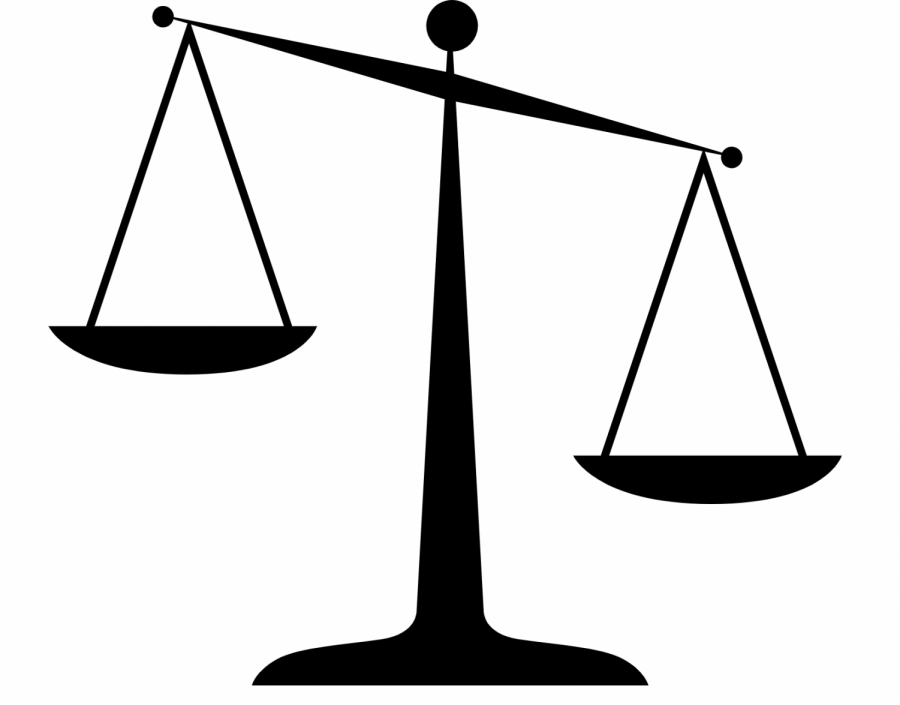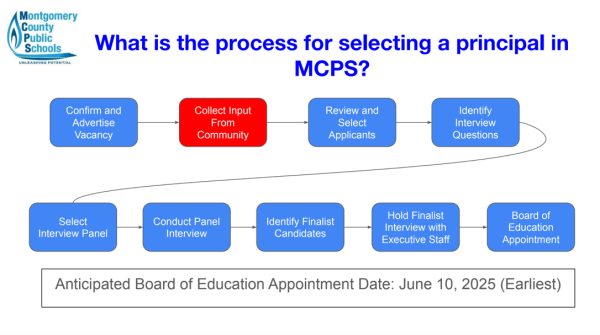Our democracy isn’t democratic
Image used with permission from Open Clip Art Library via Wiki Commons
American democracy is tipped in the favor of one party.
It’s been drilled into our heads via AP Gov, APUSH, and all the way back to elementary school: America is a democracy, and the people pick their representatives just as the founders envisioned. Maybe they were envisioning democracy, but it would be charitable to characterize our modern system that way.
The Supreme Court recently held oral arguments in a case titled Dobbs v. Jackson Women’s Health Organization. This case is sprung from a Mississippi law that bans nearly all abortions after the 15th week of pregnancy, which violates the viability standard established by Roe v. Wade, and its 1992 counterpart, Planned Parenthood v. Casey. These cases established the right to an abortion up until when the fetus can survive outside the womb— typically 24 weeks.
According to Pew Research Center, the share of the public that thinks abortion should be legal in most or all cases has never been surpassed by those who believe abortion should be illigal in most or all cases. Currently, it is a “landslide” position, at 59% favoring and 39% opposing. The group with the largest anti-abortion majority are white evangelical Christians, who oppose abortion in most or all cases at a 77% rate.
Nearly all of this group belongs to the Republican party, and 63% of their voters believe abortion should be illigal in most or all cases. Despite that opposition, the right to an abortion is supported by a wide majority of the public. If this support exists, why does the Supreme Court appear poised to substantially weaken, if not end, federal protection of abortion rights? The answer lies in the antidemocratic systems of our supposed democracy.
The Electoral College
The electoral college was supposedly formed to protect America from the majority electing an incredibly unqualified president. Instead, in 2016, it led to the victory of the only president with no prior military or government experience. Twice in the 21st Century, a candidate lost the popular vote, but became president through receiving 270 electoral votes.
In 2020, President Joe Biden won the popular vote by a seven million vote margin, a clear mandate from the voters about who the next president should be. However, he was just 42,000 votes away from an electoral college loss. According to data scientist David Shor, the electoral college is essentially a four-point burden for Democrats.
In order to win the electoral college, Democrats need to win the popular vote by about four percent. This held true in 2020, as Joe Biden won the popular vote by 4.4 percent. The main reason for this skew is that despite the impression that the electoral college makes the most populated states the most powerful, it actually props up the least populated states, many of which vote Republican.
The best example of this is Wyoming, the least populated state, vs. California, the most populated state. In Wyoming, 578,000 people equal three electoral votes, the ratio of population per electoral vote is 192,000:1. In California, that same ratio is 718,000:1. Obviously, this is an extreme example, but the same trend plays out nationwide, leading to this four-point mountain democrats must climb, just to win by a small margin in the electoral college. In smaller states, your vote counts more.
The inverse of this four-point equation occurred in 2016, as Hillary Clinton won by three million votes, and 2.1 percent. She received just 227 electoral votes. 2020 was an exception to the rule. We are a nation of close elections, and a four-point swing makes a massive difference. For the foreseeable future, the electoral college will require Democrats to win big, and require Republicans to not lose by too much.
The Senate
The same issue hurts Democrats in the Senate, and on an even more extreme scale. Using our most populated vs. least populated state example, in California there is one senator per 19,750,000 people. In Wyoming, that ratio is 279,000 per senator. A voter in Wyoming is 70x more represented than California voters. To put it another way, if 279,000 was the minimum threshold per senator, California would have 70 senators, and Maryland would have 21. Instead, every state has two senators.
The current senate is a great reflection of how hard it is for Democrats to enact legislation supported by large majorities. The senate is currently split 50-50, and Vice President Kamala Harris serves as the tiebreaker. In a true democracy, the percentage of the population represented by each 50 senator group would be close to 50%.
This “equal” split leads to 50 Democratic senators representing 186,902,361 individuals. Meanwhile, the Republican 50 represents only 143,857,375 people — a gap of 43,044,986. These figures are derived from the 2020 census, and in states where one senator from each party exists, each side received the entire population. This gap is growing. In 2019, this same population using census estimates would have led to a roughly 41,549,808 gap according to Vox.
The improper apportionment of the Senate was historically wielded by the pro-slavery southern states to block anti-slavery legislation. The same process occurred with Civil Rights legislation. It continues today, as unanimous Republican opposition on most of the Biden agenda means legislation is only progressive as the most conservative Democrat, in this case West Virginia senator Joe Manchin. If every senate vote counted the same, there would be a substantial Democratic majority, instead of the fragile 50-50 split that exists.
The House of “Representatives”
There are a variety of issues that exist in the House, but key among them are gerrymandering, and how that process denies the will of the majority. After the once-per-decade census, Congressional district lines are redrawn to accommodate population changes. Sadly, this process often leads to politicians picking their voters, and not the other way around.
To be clear, Republicans are not the only ones who gerrymander. In states like Maryland, Illinois, and New York, the Congressional delegation does not match the population. What prevents this from being a “both sides” issue, as the media tries to make it, is that congressional Democrats support legislation to end partisan gerrymandering and have voluntarily established citizen or bipartisan commissions in some states they control.
Polling and elections analyst Dave Wasserman of the Cook Political Report projects that Republicans have the ability to win a House majority in the 2022 elections through using their redistricting power alone.
The other House bias against Democrats is the Median District bias. According to Center for Politics, the Median District bias is as follows: if you lined up all the districts from most Democratic to most Republican, the median House district would be directly in the middle: number 218 out of 435 if no third party or independent candidates won seats.
For example, in 2018, In 2018, Democrats won the national popular vote by 8.6% (53.4% to 44.8%). Democrat Josh Harder won the median House district, California’s 10th, by 4.6% (52.3 to 47.7). If the whole nation voted 4.7% more Republican, Democrats would have lost CA-10 and control of the House while winning the national popular vote by 3.9%. Republicans had a 3.9% Median District Bias.
The Supreme Court
This issue is a product of the other antidemocratic institutions. When presidents who didn’t win the popular vote appoint Supreme Court justices confirmed by a senate population that does not represent that majority, you have an antidemocratic court.
Three of the nine justices fit this definition, all of them appointed during the Trump years. One of these three filled a seat that Republicans refused to consider former president Obama’s nominee for. Another was appointed when voting already began. The third of these three was accused of sexual asault at his job interview. Two other justices were appointed by George W. Bush, forming the majority that appears poised to make abortion rights dependent on the state a person lives in.
These structures are how a party that has won the popular vote one time since 1992 can exercise a 6-3 majority on the most important court in the country. This is how abortion rights, something with broad public support, can be restricted and rolled back. Oftentimes during the Trump years, Chief Justice John Roberts would side with the four liberal justices, blocking his more extreme colleagues. Justice Amy Coney Barrett is new to the court, but her existence on the court makes it possible for the Roberts influence to dissipate.
America’s systematic bent against Democrats often leads to issues with broad public support not becoming law. In turn, this fosters cynicism and a lack of faith in the democratic process. As a country that places the title “leader of the free world” on its president, and refers to itself as a “beacon of democracy,”we need to live up to our rhetoric.
Your donation will support the student journalists of Thomas S. Wootton High School. Your contribution will allow us to purchase equipment and cover our annual website hosting costs.
Ethan is a 2023 graduate.







